My Math 8 students have discovered and applied the Pythagorean Theorem. Our next move this week was to address the following standard:
8.7(D) Determine the distance between two points on a coordinate plane using the Pythagorean theorem.
“The book”, being a static resource, included diagrams where a diagonal line segment already had perpendicular reference segments… and the step-by-step work… which, of course, had the Pythagorean Theorem as the first step. Static resources can inevitably provide static lesson spoilers too.
I wanted to create a journey for students, providing information incrementally, asking questions along the way, while giving EVERY student a chance to weigh in at each step.
 Socrative was my tool of choice here. The super-clean interface for asking questions and eliciting responses is often my go-to. I love their Teacher-Paced option, so that I can pose and display one question at a time from the front of the class, and I can hide responses until everyone has weighed in. If I want to know the specifics about who-answered-what, I have a detailed report for that later. In the moment, I’m often less interested in knowing who said what, and more interested in seeing the variety of responses, and overall progress AKA class percentages. Sometimes too much detail in the moment makes the lesson experience feel clunky.
Socrative was my tool of choice here. The super-clean interface for asking questions and eliciting responses is often my go-to. I love their Teacher-Paced option, so that I can pose and display one question at a time from the front of the class, and I can hide responses until everyone has weighed in. If I want to know the specifics about who-answered-what, I have a detailed report for that later. In the moment, I’m often less interested in knowing who said what, and more interested in seeing the variety of responses, and overall progress AKA class percentages. Sometimes too much detail in the moment makes the lesson experience feel clunky.
So, students entered class, joined our Socrative “classroom” and began by answering two “low floor” questions (graphs created using Desmos.com). Piece of cake… except some students DID count incorrectly, and commented on how, next time, they’ll consider coordinates and/or look at a nearby axis to confirm their counting abilities. THEY came up with these little tips. Sweet!
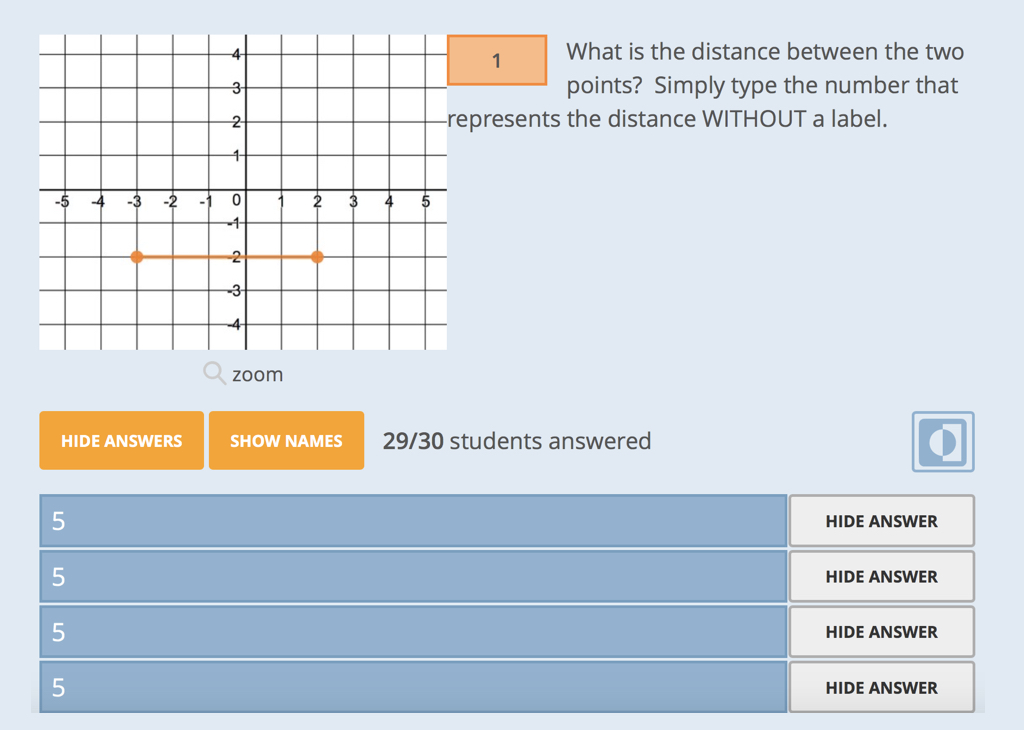
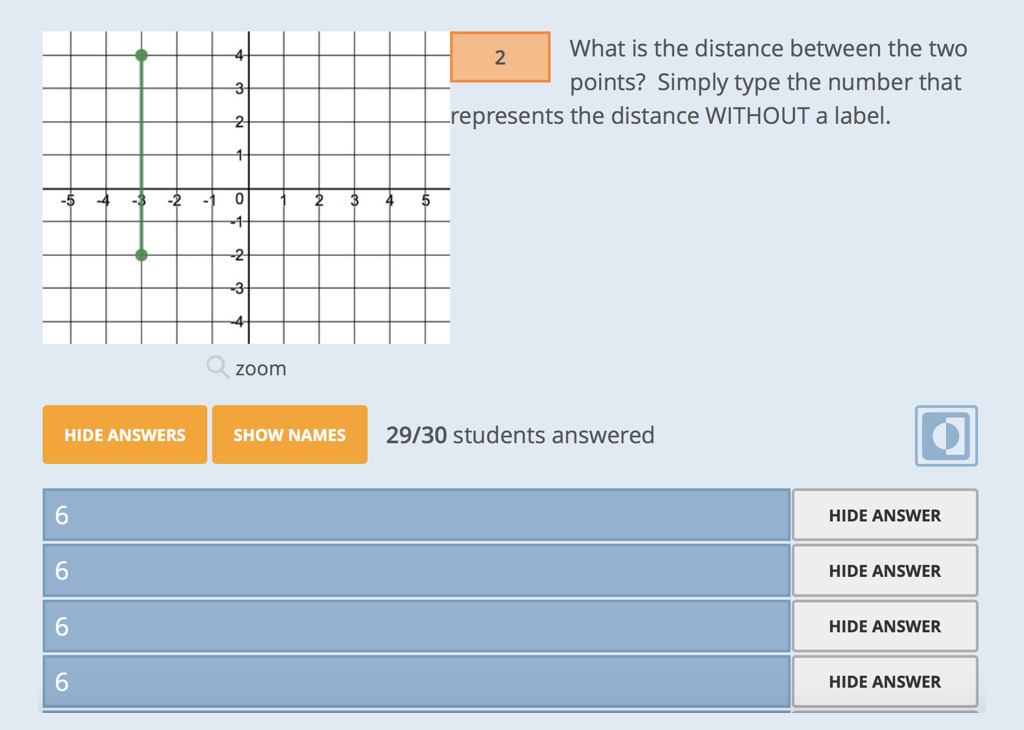
I could hardly wait to send out the next question. I anticipated the looks on their faces ahead of time… but their reactions are generally even better than I anticipate. Furrowed eyebrows, various thinking sounds like, “Huh…” “Wait… what?” and a handful of students who transitioned to… “I think I know what to do here…” and “OH! I totally know what’s going on!” Scanning the classroom and just watching and listening… I mean… SO FUN.
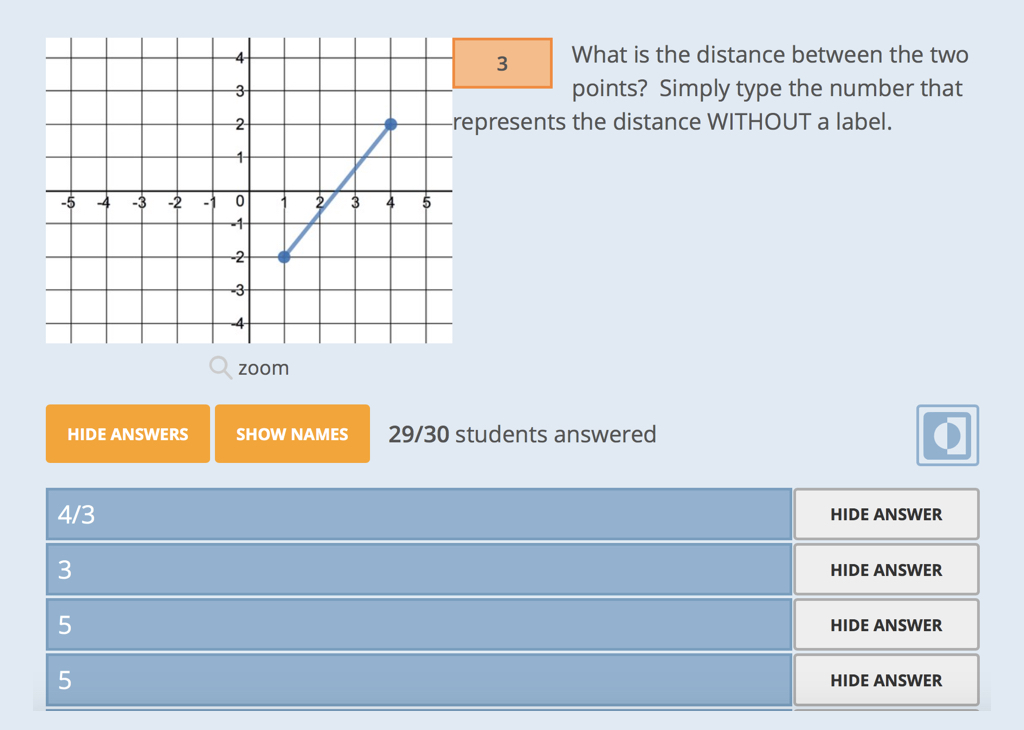
Some students simply estimated, others guessed correctly, others tried relating this experience to finding the slope of a line, and others knew EXACTLY why the distance was 5. We’d also experienced Pythagorean Triples in class (as well as THIS particularly emotional YouTube video) and I strategically chose the most familiar triple so that the students who made the connection could do so mentally. The big idea here wasn’t necessarily about showing WORK or needing to grab a CALCULATOR, but seeing RELATIONSHIPS. Simple dimensions were important for that.
Students who had made the connection celebrated quietly – they knew a secret that others didn’t yet. Rather than encourage a class discussion at this point, I quickly moved to the next question.
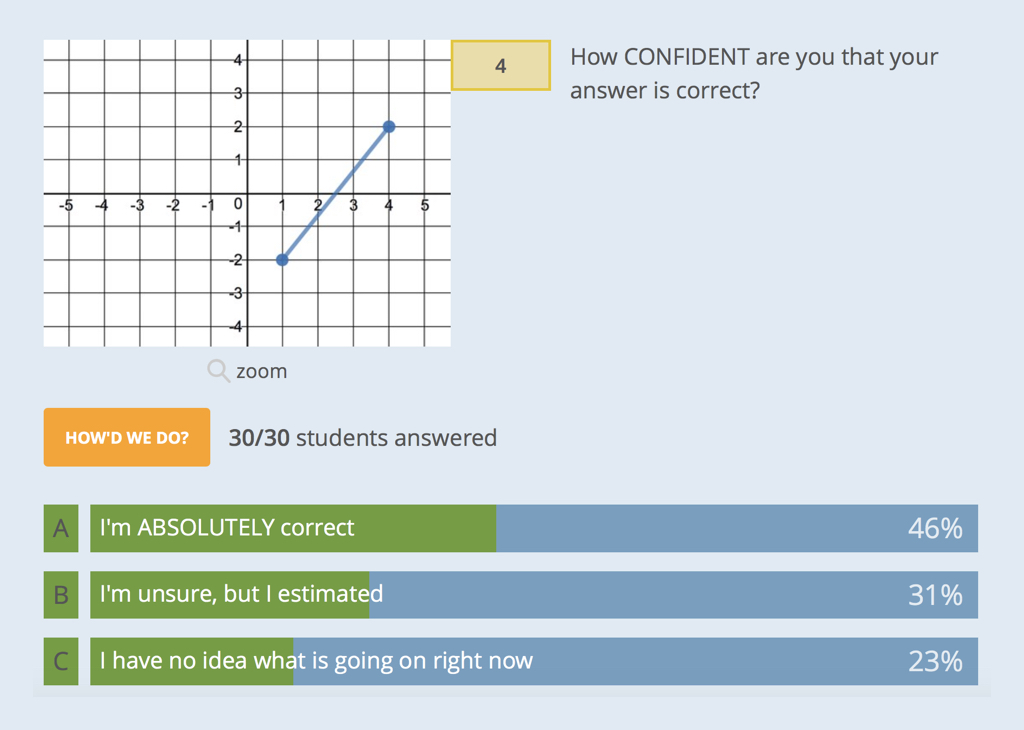
At this point, some students were about to burst with excitement, and others were super curious… what did these confident students know that they didn’t know yet?
Next question…
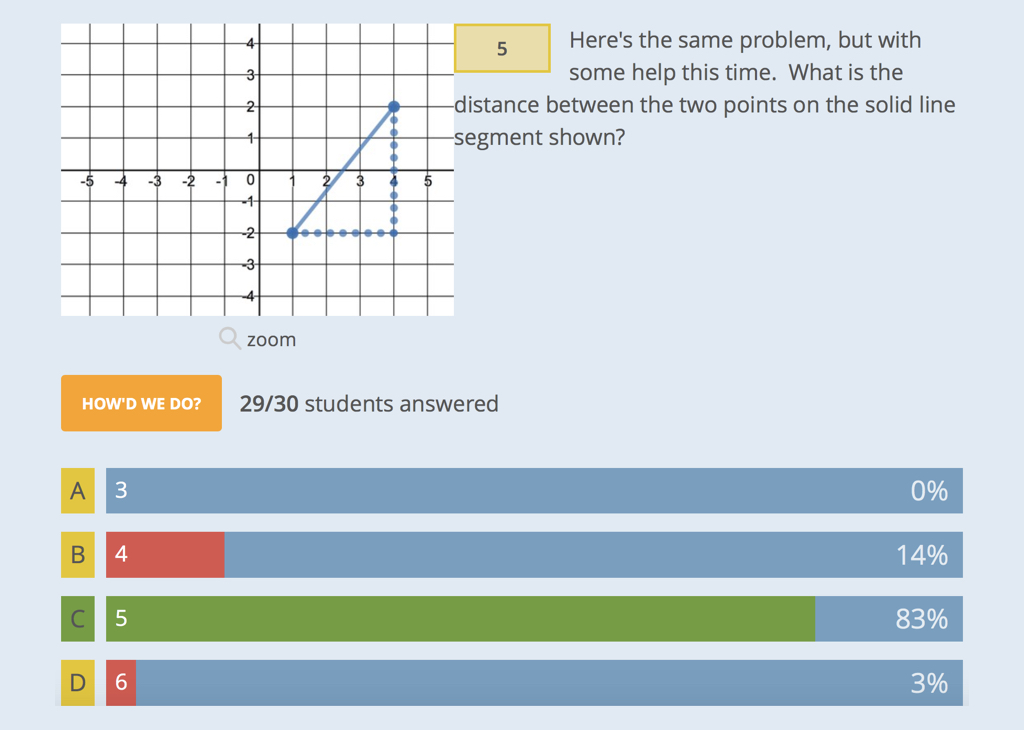
My typical “curse of knowledge” surprised me a bit here. In every class, the correct answer choice percentage ranged from 79% to 85%. I thought I’d nearly spoiled the lesson at this point, but in every class, some students were still working through why I’d provided this additional visual information…
During this mushy spot in the lesson/warm-up/whatever you want to call this 15-minute Socrative experience, I heard a lot of what I call “The Sound of Learning.” Lots of grunts and a-ha’s… all happening at DIFFERENT MOMENTS. I get the privilege of actually seeing and hearing each student go from not knowing to making connections. Such a JOY!
To be sure I didn’t miss anybody, I provided another experience just like this one, using 5-12-13. Question 1: What’s the distance? Question 2: How confident are you about your answer? Question 3: Right triangle time. SWEET. Check out THAT percentage.
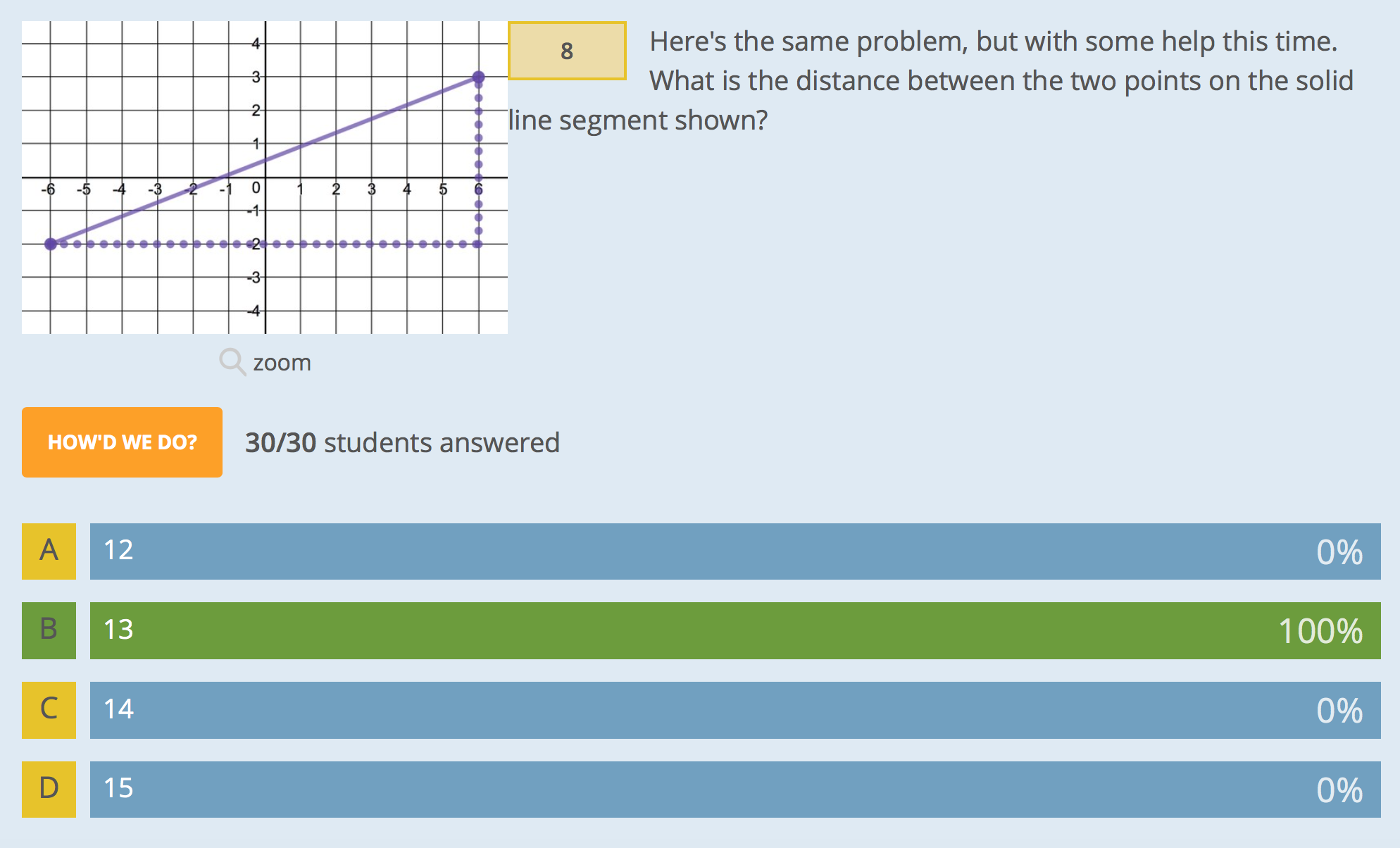
And just for good measure, I asked once more. No Pythagorean Triple this time. No guiding questions. Just find the distance.
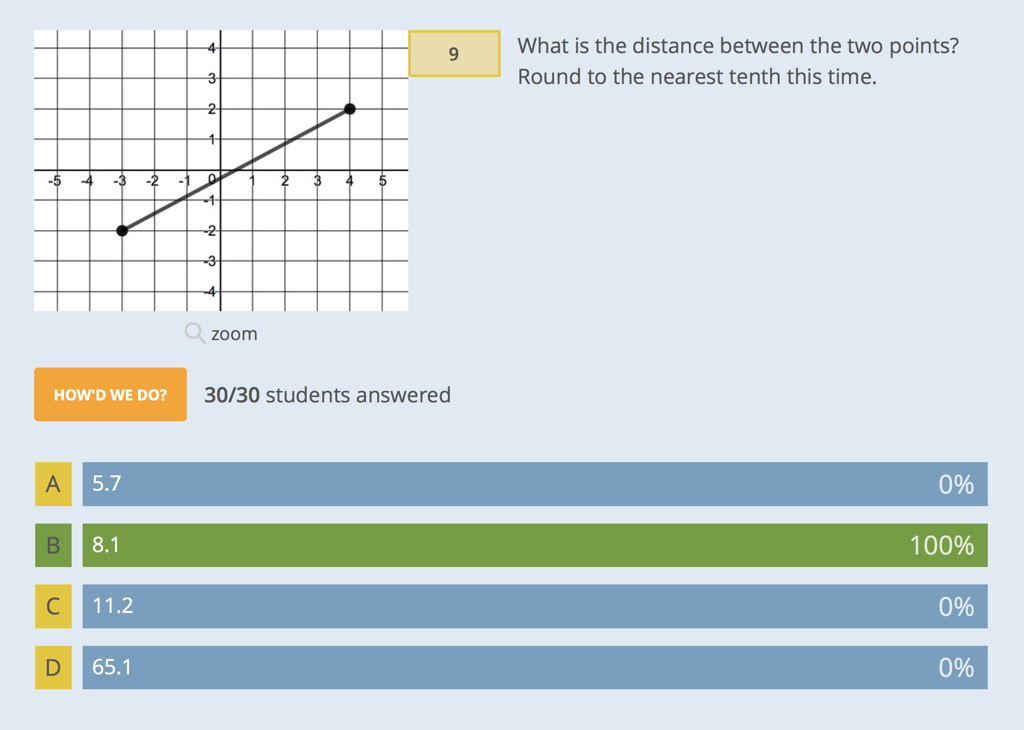
Much more meaningful than a lesson spoiler! If you would like to use this Socrative resource, here’s the link:
https://b.socrative.com/teacher/#import-quiz/32367596
What other math concepts do you think lend themselves to Socratic Questioning rather than spoiling-by-telling?











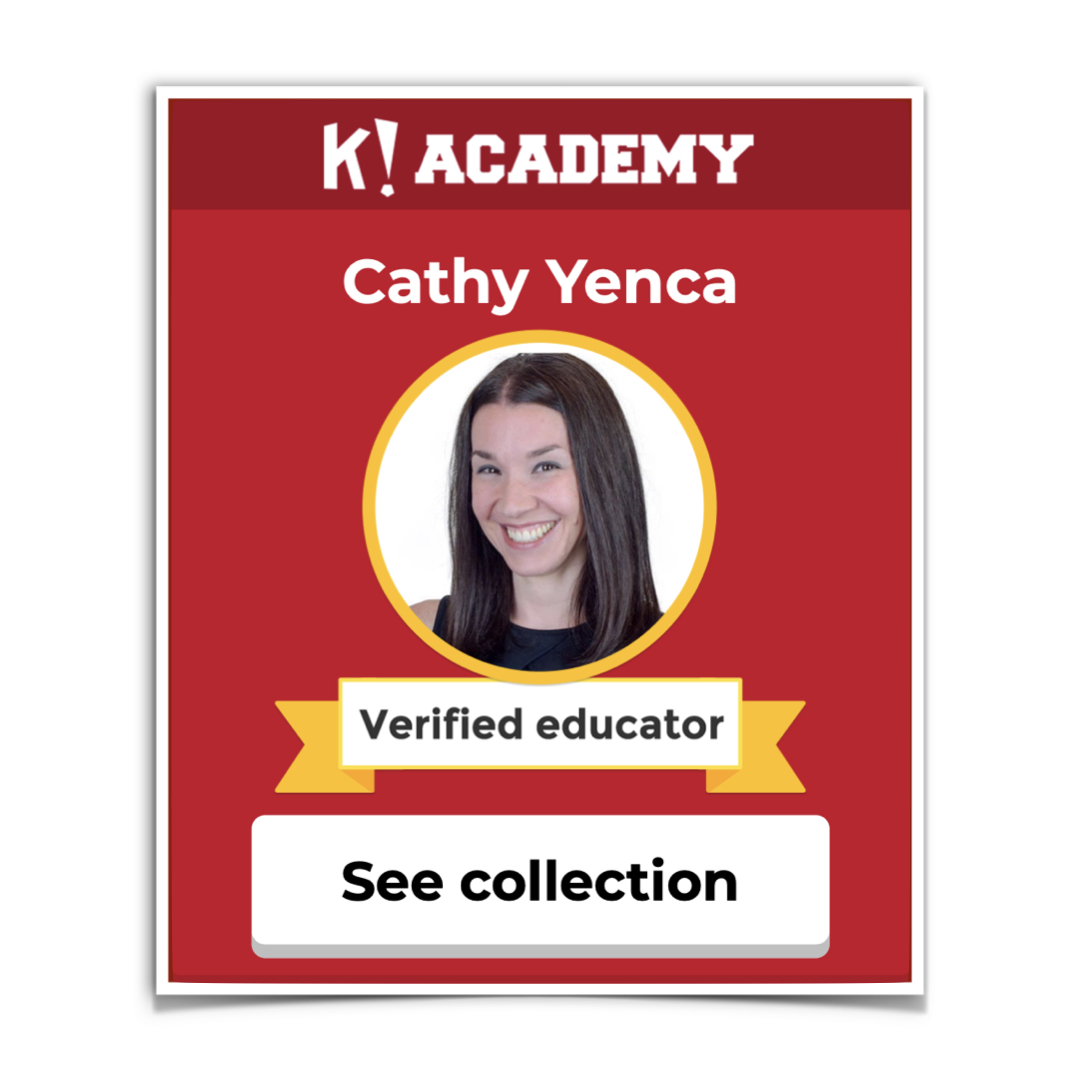
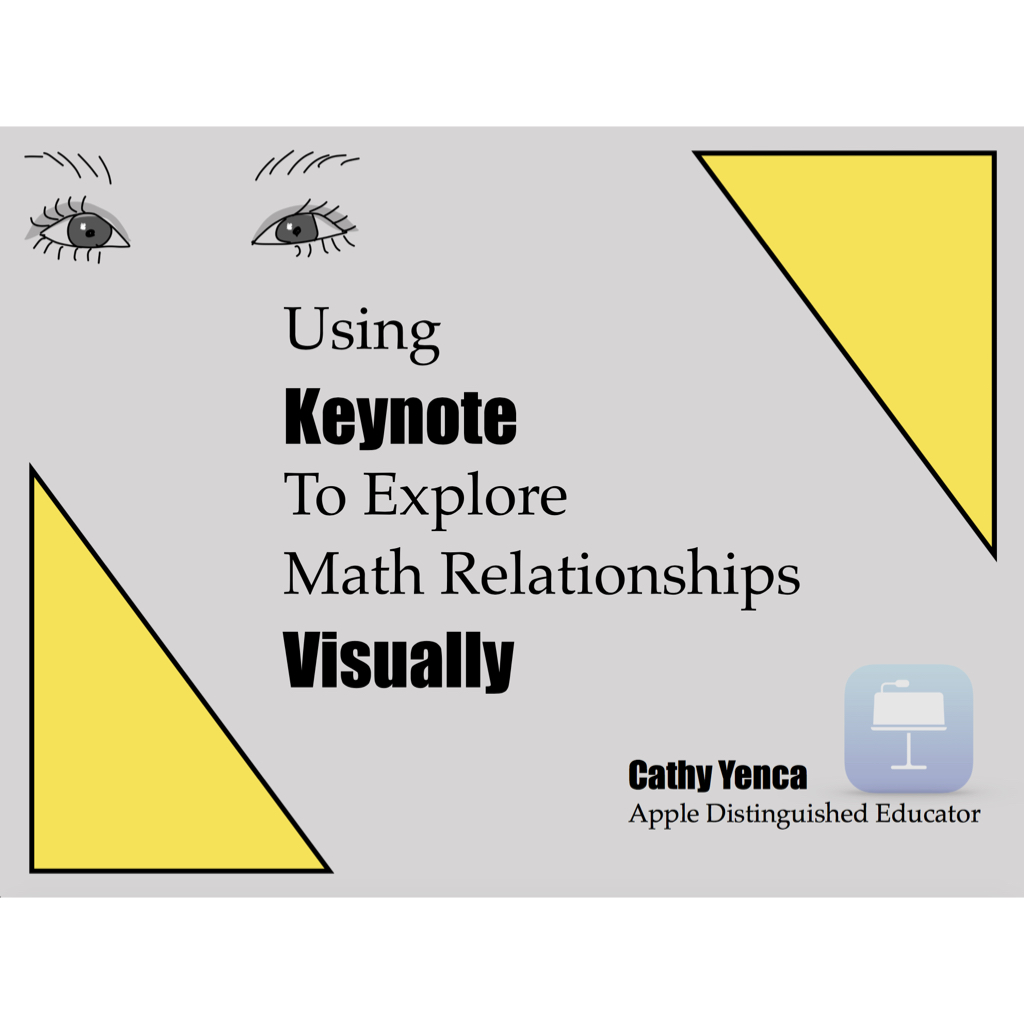

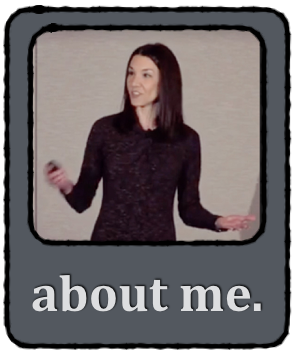

Pingback: #MathResourceRoundup – Pythagorean Theorem | MathyCathy's Blog – Mrs. Cathy Yenca